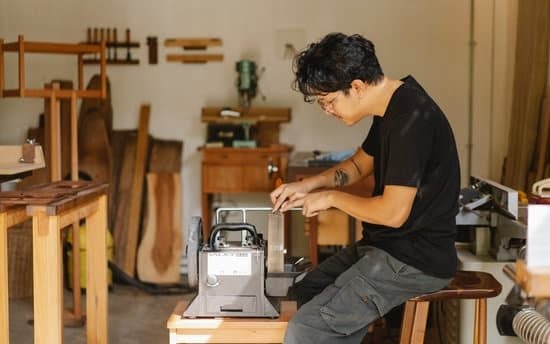Woodworking is a great hobby, but it can also be a great profession. If you are woodworking as a profession, you need to have a place to store your tools and materials. You also need a place to work. In most cases, your workshop will be in your garage.
The biggest challenge in setting up a woodworking shop in your garage is finding enough space. Most garages are not designed to be workshops. They are designed to store cars. If you are lucky, you may have a corner of your garage that is big enough to set up a small workshop.
If you don’t have a corner of your garage that is big enough, you will need to find some other space in your house to set up your workshop. You may need to remodel a room or build a shed in your backyard.
Once you have found a place to set up your workshop, you need to start thinking about the tools and materials you will need. You will need a workbench, a saw table, a drill press, a scroll saw, and a lot of other tools. You will also need a lot of different types of woodworking supplies, including wood, screws, nails, glue, and sandpaper.
The best way to store your tools and supplies is to build some storage cabinets. Storage cabinets will help you keep your workshop organized and tidy. They will also protect your tools and supplies from the weather.
There are a lot of different types of storage cabinets you can build. The most common type of storage cabinet is a simple cabinet with doors and shelves. You can also build a cabinet with drawers, or a cabinet with a hinged top.
No matter what type of storage cabinet you build, you will need to plan your design carefully. The most important thing is to make sure that your cabinet will be big enough to hold all of your tools and supplies.
The best way to design your storage cabinet is to draw a diagram of the cabinet on paper. Make sure to include the size of the cabinet, the type of doors or drawers, and the location of the shelves. Once you have drawn your diagram, you can start building your cabinet.
If you are not a skilled woodworker, you may want to hire a professional to build your storage cabinet. A professional will be able to build a cabinet that is strong and sturdy.
Building a storage cabinet is a great way to organize your workshop and protect your tools and supplies. It is also a great way to show your skills as a woodworker.
What Type Of Woodworking Router Do I Need
There are a few factors you need to consider when choosing the type of woodworking router you need:
1. What type of material will you be routing?
2. What size router do you need?
3. What type of router bit do you need?
4. What are your routing needs?
Material:
The first factor to consider when choosing a router is the type of material you will be routing. There are three main types of routers: plunge routers, fixed base routers, and combo routers.
Plunge routers are best for routing in the middle of a board or for removing a lot of material. They have a depth adjustment ring that allows you to control the depth of the cut and a plunge release lever that allows you to quickly and easily plunge the bit into the material.
Fixed base routers are best for edge routing and are more common than plunge routers. They have a base that is fixed to the router table and a motor that moves up and down. They also have a depth adjustment ring and a plunge release lever.
Combo routers are a combination of plunge and fixed base routers. They are best for a variety of applications, but are not as good for routing in the middle of a board as plunge routers are or for removing a lot of material as fixed base routers are.
Size:
The second factor to consider when choosing a router is the size of the router. Routers come in a variety of sizes, with the most common sizes being 3-1/4 inches, 3-3/4 inches, and 4-1/2 inches.
The size of the router you need depends on the size of the material you will be routing. If you will be routing a small piece of material, you need a small router. If you will be routing a large piece of material, you need a large router.
Type of Router Bit:
The third factor to consider when choosing a router is the type of router bit you need. Router bits come in a variety of shapes and sizes, with the most common shapes being straight bits, round-over bits, and chamfer bits.
The type of router bit you need depends on the type of cut you want to make. If you want to make a straight cut, you need a straight bit. If you want to make a round-over cut, you need a round-over bit. If you want to make a chamfer cut, you need a chamfer bit.
Routing Needs:
The fourth factor to consider when choosing a router is your routing needs. Routers come with a variety of features that allow you to do a variety of things. Some routers have a built-in dust port that allows you to collect the dust as you rout. Some routers have a variable speed control that allows you to control the speed of the router. Some routers have a soft start that slowly increases the speed of the router as it starts up. And some routers have a brake that quickly stops the router when you release the router switch.
The features you need depend on the type of routing you will be doing. If you will be routing a lot of material, you need a router with a variable speed control. If you will be routing a small piece of material, you need a router with a soft start. And if you will be routing a large piece of material, you need a router with a brake.
Leather Woodworking Aprons
Leather aprons are a must-have for woodworkers. They protect your clothes from sawdust, wood chips, and other debris. They also provide some protection from accidental cuts.
There are a variety of leather aprons available, but the most important factor is the fit. The apron should fit snugly so that it doesn’t flap around while you’re working.
The best aprons are made from top-grain leather. This is the strongest and most durable type of leather. It’s also quite expensive, so if you’re on a budget, you can buy an apron made from split leather or synthetic materials.
Leather aprons come in a variety of styles, including traditional bib aprons, waist aprons, and shop aprons. The most important thing is to choose an apron that’s comfortable to wear and fits well.
If you’re a woodworker, a leather apron is a must-have. It will protect your clothes from sawdust and other debris, and it will also provide some protection from accidental cuts.
What Year Was Steam-Driven Woodworking Machinery Made
?
The first steam-driven woodworking machinery was made in the early 1800s. This machinery was used to power saws, lathes, and other tools used in woodworking.
How Long Does Wood Take To Dry For Woodworking
?
This is a question that a lot of people starting out in woodworking may have. The answer, unfortunately, is not a straightforward one. The amount of time that wood takes to dry can vary greatly depending on a number of factors, including the type of wood, the humidity levels, and the size and thickness of the boards.
That being said, there are a few general rules of thumb that can give you a good idea of how long wood will need to dry. Thicker pieces of wood will generally take longer to dry than thinner pieces, and harder woods will take longer to dry than softer woods. In general, you can expect wood to take anywhere from several weeks to several months to dry completely.
If you are in a hurry to get your woodworking project done, you can try to speed up the drying process by using a drying rack or a dehumidifier. However, it is important to note that doing so may result in the wood becoming warped or cracked.

Hi everyone! I’m a woodworker and blogger, and this is my woodworking blog. In my blog, I share tips and tricks for woodworkers of all skill levels, as well as project ideas that you can try yourself.





